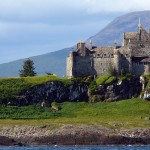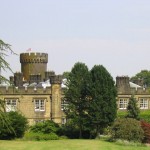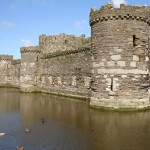A Little Patch of Paradise – Pembrokeshire Islands are an Ornithologists’ Dream | UK
If you’re looking for peace, tranquillity and solitude, then you could do worse than head for Pembrokeshire in south Wales…or more accurately, one of the five nearby islands that lie off its coastline.

Puffin, Skomer by Richard Toller
Four of these – Skokholm, Ramsey, Grassholm, and Skomer – are nature reserves, and the fifth is home to a Trappist monastery, where monks of the Reformed Cistercian Order make their own perfume and chocolates amidst the spectacular scenery of Caldey Island.
These islands are a bird-lovers’ paradise, where half the world’s population of Manx shearwaters nest and breed, and some of the estimated 86,000 burrows on Skokholm alone have been made by puffins.
Stronghold of the Gannet
The tiny Grassholm Island is a stronghold of the gannet; 80,000 of these gull-like birds have made their home here, and although inaccessible to anyone on foot, a local boat will take you close enough to experience the sight – and sometimes overpowering smell – of these huge seabirds.
In the 1930s, naturalist and adventurer Ronald Lockley lived on Skokholm, and published a best-selling account of his and his wife’s experiences as sole occupants of this little patch of paradise.
His ‘Dream Island’ may be long forgotten by all but the most avid of his literary followers, but small numbers of visitors are still allowed onto the island to see the farmhouse he renovated with driftwood, and walk the paths and clifftops he knew and loved so well.
- While you’re in the area: Tintern Abbey near Chepstow is well worth a visit – a place that inspired both the poet William Wordsworth and painter J.M.W. Turner
- So too is St. David’s Head, where Iron Age farmers left behind traces of their presence for generations to see at Warrior’s Dyke; and Arthur’s Quoit, a huge slab of stone said to have been thrown by the legendary king from a nearby hill, and which today is held in place by a solitary, upright piece of rock.
Modern-day archeologists believe it to be the capstone of a burial chamber that may date back some 5,500 years.
- Chepstow Castle, founded by William the Conqueror’s contemporary William Fitzosbern within a year of the Battle of Hastings, incorporates the oldest surviving Norman fortification in the whole of Britain.
Perched high above the banks of the River Wye, Chepstow - now superbly-preseved, grade one listed ruins – was probably the very first stone castle in the country.

On Grassholm island, UK by Richard Toller
Nicki Williams is a content writer for on-line,outdoor retailers Gear-Zone, where you’ll find everything for a walking and hiking holiday from major brands including The North Face, Berghaus, Rab, Scarpa and Brasher
Category: Nature Reserves, Nature Reserves














